How to Generate Poems Without Using ChatGPT?
Poetry has the power to convey emotions, ideas, and stories in a succinct and impactful way. It’s a form of art that transcends simple writing, engaging the reader with rhythm, language, and meaning.
But for many, the process of writing a poem can be challenging, especially when you’re stuck for ideas or can’t find the right words. While AI tools like ChatGPT are great for generating poetry, they can sometimes be a hassle.
The continuous back-and-forth needed to perfect the prompts can feel exhausting. But what if you could generate poems without the need for ChatGPT? What if there was an easier, more direct way to bring your poetic visions to life?
In this article, we’ll explore how you can generate poems without ChatGPT, using alternative methods and tools. By the end, you’ll have a solid grasp of how to create poetry, with or without the help of AI.
Why Should You Generate Poems Without ChatGPT?
While AI tools like ChatGPT can help with poetry generation, they aren’t always the best fit for everyone. Here’s why you might want to explore generating poems without relying on AI models:
- Less Time Spent Fine-Tuning Prompts: With ChatGPT, you often need to craft the perfect prompt to get the desired output. This can be time-consuming. Without AI, you can focus solely on the creative aspect of writing, making the process feel more authentic.
- More Control Over Your Writing: Generating poems without AI means you’re in control of every aspect of the poem. You decide the theme, structure, and tone, allowing you to make the poem truly yours.
- Better Learning Experience: Writing poems manually or with alternative tools enhances your poetic skills. You become more aware of structure, rhythm, and word choice, making you a better poet in the long run.
How to Generate Poems Without Using ChatGPT?
Guess what? Writing poems just got way easier! With our fun and friendly poem generator, you can whip up magical verses in seconds, no brain-squeezing or fancy prompts required! Let’s explore some practical methods to help you generate poems without ChatGPT.
1- Start With a Central Theme: The Backbone of Your Poem
The first step in writing any poem is to decide on a central theme. A theme is the core idea around which your entire poem will revolve. It can be based on emotions, events, or concepts that matter to you. Here are some tips for crafting a theme:
Reflect on a moment in your life that stood out. Maybe it was a joyful memory, a challenging time, or something that left you with a strong emotional response.
Your theme could be something intangible like hope, freedom, or nature.
A metaphor can add depth to your theme. For example, describing love as “a spark that keeps you warm” or “a storm you can’t control” adds layers to your poem.
Once you have a clear theme, the next step is to decide on the structure and form of your poem.
2- Choose the Poem Type and length
After you’ve picked your topic or idea, it’s time to think about the type of poem you want to write and how long it should be.
Do you want to write a short poem for fun, or are you planning to submit your work to a poetry contest or a blog? For example, Some platforms like Frontier Poetry only accept poems of a certain length (no more than 10 pages in total). That’s why it’s important to know your goal before you start.
You can go with simple styles like haikus or free verse, or explore classic forms like sonnets or limericks. If you’re not sure what suits your idea best, our poem writer can help. It gives you different styles to choose from and helps shape your poem based on your theme and mood.
Keep in mind, tools like this are meant to support your creativity, not replace it. Always write in your own voice. Use the generator to build ideas, get past writer’s block, and stay inspired but avoid copying anything directly if you’re submitting your poem to contests.
Your poem should always feel like you.
Use Poetry Writing Tools
If you don’t want to rely on AI like ChatGPT, there are plenty of poetry writing tools that can help generate ideas, structure poems, and even provide feedback. Here are some options to consider:
You can use our AI poem generator to create poems instantly, even when you’re facing writer’s block. Just choose your poem type, length, and theme. Here’s a look at our poem generator interface below:
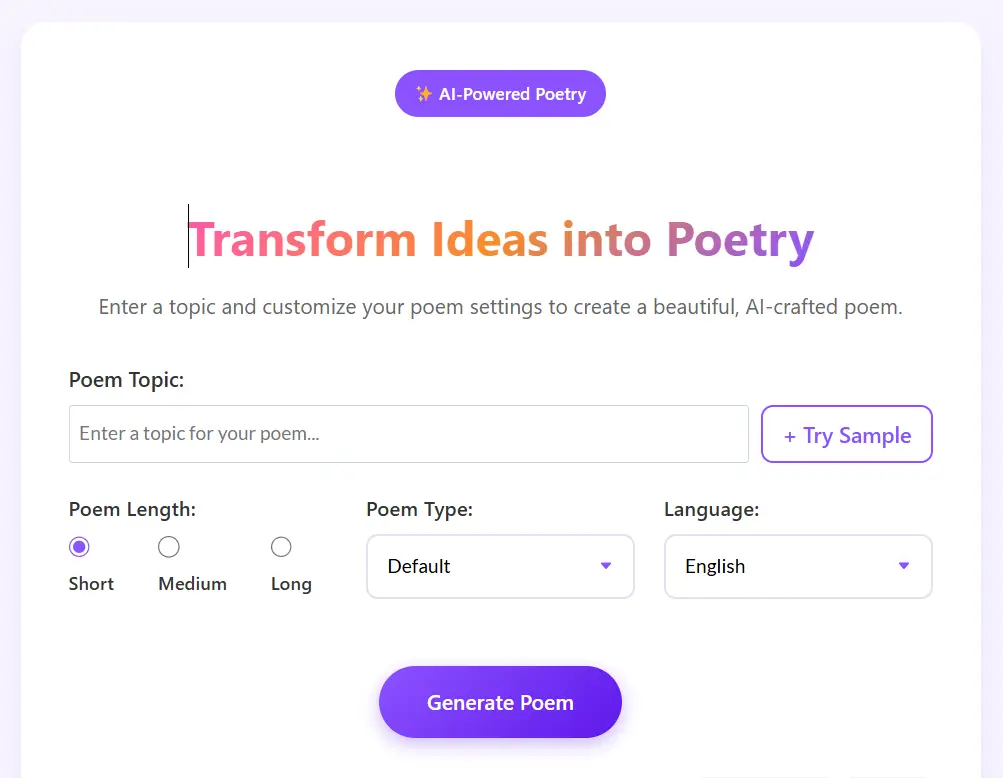
Now just click on “Generate Poem” and let the poem generator do its magic. Here’s what it created for our sample poem:
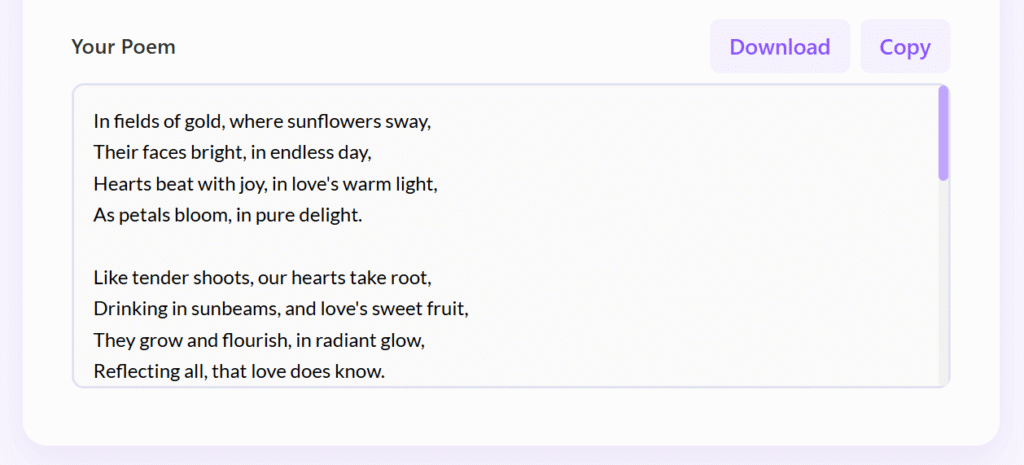
Once you’re on this screen, you can choose a different poem type and generate a new version anytime you like. When you’re happy with the result, you can either save it as a text file or simply copy it to your clipboard for later use.
Write and Refine Your Poem
Once you’ve chosen your theme and form, it’s time to write the poem.
The choice of words (diction) plays a huge role in how your poem feels. Pay attention to the rhythm and flow of your words. Sometimes, the right word can make a world of difference.
If you’re working with a traditional form like a sonnet or limerick, be sure to stick to the rules. This will help the poem feel balanced and cohesive.
Break your poem into stanzas (groups of lines). This will help organize your thoughts and create a clear flow of ideas.
Useful Considerations While Using Generative AI for Poems
Proofreading and Refining Your Poem
No poem is ever perfect on the first try. Once you’ve finished writing, it’s essential to proofread and refine your work. Here’s how to make your poem the best it can be:
Read your poem out loud to ensure it flows well. Are the ideas clear? Do the words convey the emotion you intended?
Ensure that the stanzas and rhyme schemes (if applicable) are consistent.
Choose words that enhance the mood and tone of your poem. Sometimes, swapping one word for another can make a world of difference.
Add Your Personal Touch
AI tools and writing prompts can provide a great starting point, but the final product should always reflect your voice as a poet. Whether you want the poem to feel dark, hopeful, nostalgic, or whimsical, adjusting the tone will make the poem uniquely yours.
Rework lines to make them sound more like you. Add your personality, making sure the poem feels natural and authentic.
Every poet has a unique style. Maybe you like to use a lot of imagery, or perhaps you prefer short, punchy lines. Whatever your style is, let it shine through.
Seek Feedback and Keep Improving
Once you’ve written your poem, it’s time to share it. Ask friends, family, or other poets for feedback. This can help you refine your skills and avoid common mistakes. Constructive criticism is an excellent way to grow your poem writing skills.
The Joy of Writing Poems without ChatGPT
There’s something incredibly satisfying about writing poems without using ChatGPT. You get to experience the full creative process, starting from a blank page and crafting something unique. Whether you’re using a traditional pen and paper or an online tool, the process of creating poems with AI or without it will always be an adventure.
The goal is to generate poems that reflect your voice and style, whether through AI tools or by hand. And remember, every poet, whether seasoned or novice, has their own unique way of doing it. So, find what works for you and enjoy the process.
Final Thoughts
Generating poems without ChatGPT or other AI tools doesn’t have to be difficult. By following the steps outlined above, you can create poetry that’s meaningful and unique. Whether you use traditional methods or online tools to help generate ideas, the most important part is to stay true to your voice as a poet.
Remember, the best poems come from the heart. So, start writing and let your creativity flow naturally!
Frequently Asked Questions
How do I come up with a theme for my poem?
Start by reflecting on your emotions or personal experiences. Think about a moment in your life that left a mark, or explore abstract ideas like love, freedom, or change.
What if I don’t know what type of poem to write?
Explore different types of poems to find one that suits your theme. You can write a free verse, haiku, sonnet, or any other form that best fits your message.
How can I refine my poem?
Read it aloud to check for clarity, ensure the structure follows the chosen form, and revise the wording to match the tone you want to achieve.
Is it okay to use an AI tool for generating poems?
It’s perfectly fine to use AI tools for inspiration or as a starting point, but remember to personalize the output so it reflects your unique voice.
How can I improve my poetic skills?
Practice regularly, experiment with different forms and styles, and seek feedback from others to refine your writing.

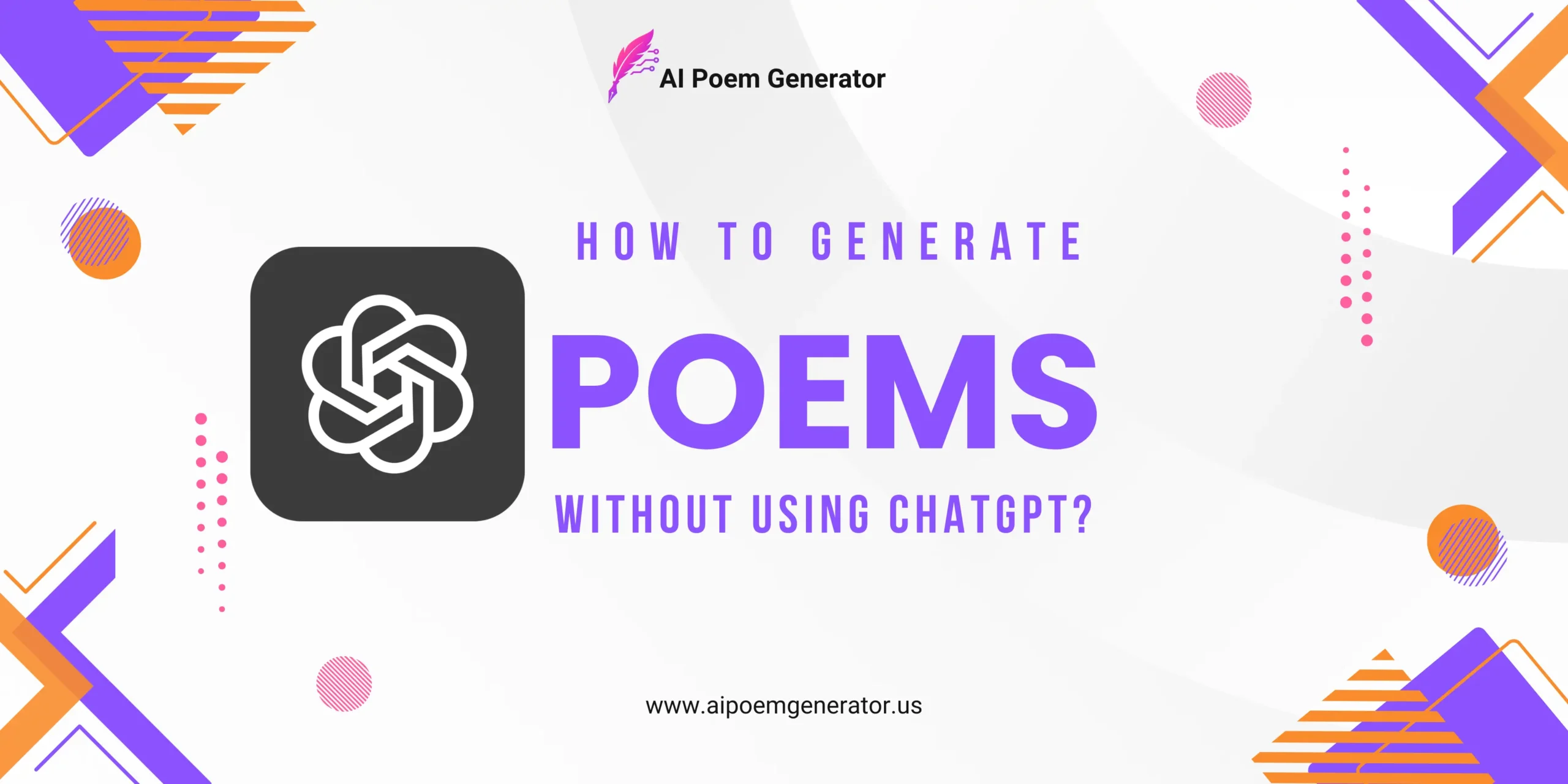
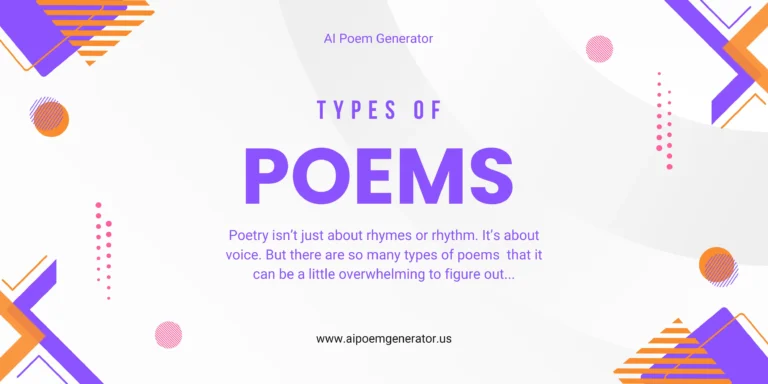
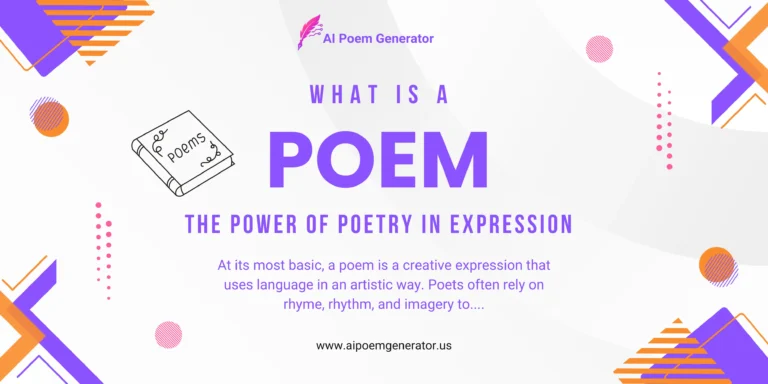
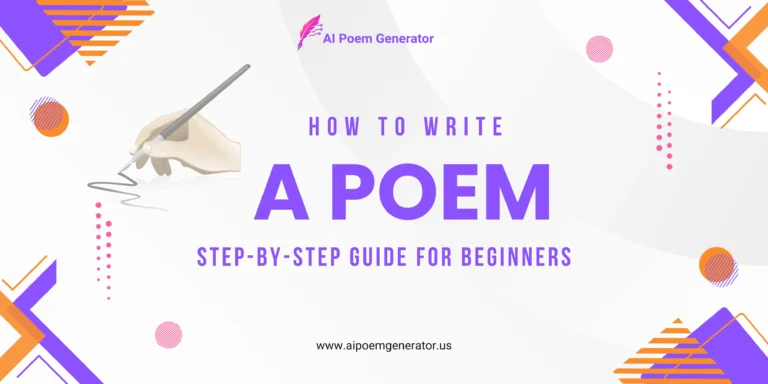
2 Comments